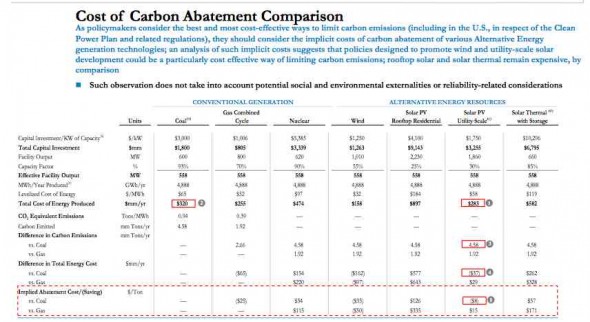
It’s a truism perhaps most prevalent in the music scene: today’s alternative is tomorrow’s mainstream.
I remember when a new Irish band called U2 first came to the United States. Their first show was at a Washington club called The Bayou, where my band frequently played. U2 was opening for some good friends of mine, the locally-hot Slickee Boys. Afterwards, the Irish kids went off on their American tour in support of their just-released first album, Boy. I Will Follow from the album became a monster hit on alternative radio (mainstream rock radio at the time wouldn’t touch it). But the buzz in the indy media was strong enough so that when U2 came back to the Bayou for their final U.S. show of the tour, The Slickee Boys opened for them. And a local rock radio station carried the concert live. U2 never looked back, becoming for years one of the (some might argue “the”) biggest rock bands in the world.
There are surely similar stories out there about Nirvana and Pearl Jam, and most every other initially indie music act that hit it big. And there are probably stories about other arenas–film, literature, whatever.
The concept seems to work for energy too.
Back in the day–ok, even five years ago–solar and wind power were often described as “alternatives.” Alternatives to coal, or nuclear, or whatever energy source they were being compared to. Hell, even NIRS’ own website still has a section focused on renewables and efficiency labeled Alternatives to Nuclear. The implication of being an “alternative” is that it isn’t quite mainstream yet, perhaps not yet ready for the big time.
If that’s the case, perhaps the Nuclear Energy Institute should set up a new section promoting nuclear power on its website titled Alternatives to Clean Energy. Because clean energy is now the mainstream and the electricity production sources of the 20th century are, at most, alternatives. To be sure, though, they are obsolete alternatives.
Last week, the International Energy Agency (IEA) pointed out that renewables are now the second largest generation source in the world, topped only by coal, and that renewables accounted for half of all new generation in 2014.
But more forward-looking–and even more compelling–is a report released yesterday from the investment bank Lazard, which examines the levelized costs of the various energy technologies. Wind and solar are not only beating nuclear–as would be expected–but also coal and even natural gas. Remember that next time you read about some utility exec (or uninformed journalist) complaining that nuclear reactors are closing because of competition from low-priced gas. Sure, the ready availability of gas right now due to large-scale fracking means there is ample supply at low cost–but the real competition on the price end from here to eternity, what the nuclear utilities know lies ahead for them, is that nuclear REALLY can’t compete with renewables. In fact, according to Lazard, wind and solar are now less than half the price of new nuclear. “And the curve is still heading down” for renewables, “while nuclear is the only technology to show a significant increase.”
In the only glimmer of hope for nuclear power (and for fossil fuels too, for that matter), Lazard somehow concludes that “alternative energy systems alone will not be capable of meeting the baseload generation needs of a developed economy for the foreseeable future.”
At the same time, Lazard issued a second report, which concludes that energy storage technologies are now at an “inflection point.” The bank found that storage is already competitive, without subsidies, for some applications, such as grid stability. But the report also states that storage costs will continue to drop dramatically over the next five years, meaning that other applications for storage will become cost-competitive as well, and quickly. Still, the bank states that we’re not yet at the point where storage can economically meet the “transformational scenarios envisioned by renewable energy advocates.”
But perhaps for Lazard the “foreseeable future” is only five years. Or perhaps the bank is trying to throw a bone to its many clients tied to the nuclear and fossil fuel industries. Because taken together, the reports lead to only one conclusion: clean energy is no longer the “alternative,” it is already the mainstream. Whether that transformation hits full steam two years from now, or five years, or even ten years (all mere whiffs of time for utility planners in an industry where 10 years is the new norm to build a single nuclear reactor), is less relevant than the reality that it is unstoppable. All the nuclear-powered ideology in the world isn’t going to put a dangerous, obsolete technology on top, especially when it is already the most expensive option available and the gap is only widening.
Michael Mariotte
November 18, 2015
Permalink: https://www.nirs.org/the-alternative/
Your contributions make publication of GreenWorld possible. If you value GreenWorld, please make a tax-deductible donation here and ensure our continued publication. We gratefully appreciate every donation of any size.
Comments are welcome on all GreenWorld posts! Say your piece. Start a discussion. Don’t be shy; this blog is for you.
If you’d like to receive GreenWorld via e-mail, send your name and e-mail address to nirs@nirs.org and we’ll send you an invitation. Note that the invitation will come from a GreenWorld@wordpress.com address and not a nirs.org address, so watch for it. Or just put your e-mail address into the box in the right-hand column.
If you like GreenWorld, help us reach more people. Just use the icons below to “like” our posts and to share them on the various social networking sites you use. And if you don’t like GreenWorld, please let us know that too. Send an e-mail with your comments/complaints/compliments to nirs@nirs.org. Thank you!
GreenWorld is crossposted on tumblr at https://www.tumblr.com/blog/nirsnet




There’s Always an Alternative!
Reblogged this on nuclear-news.